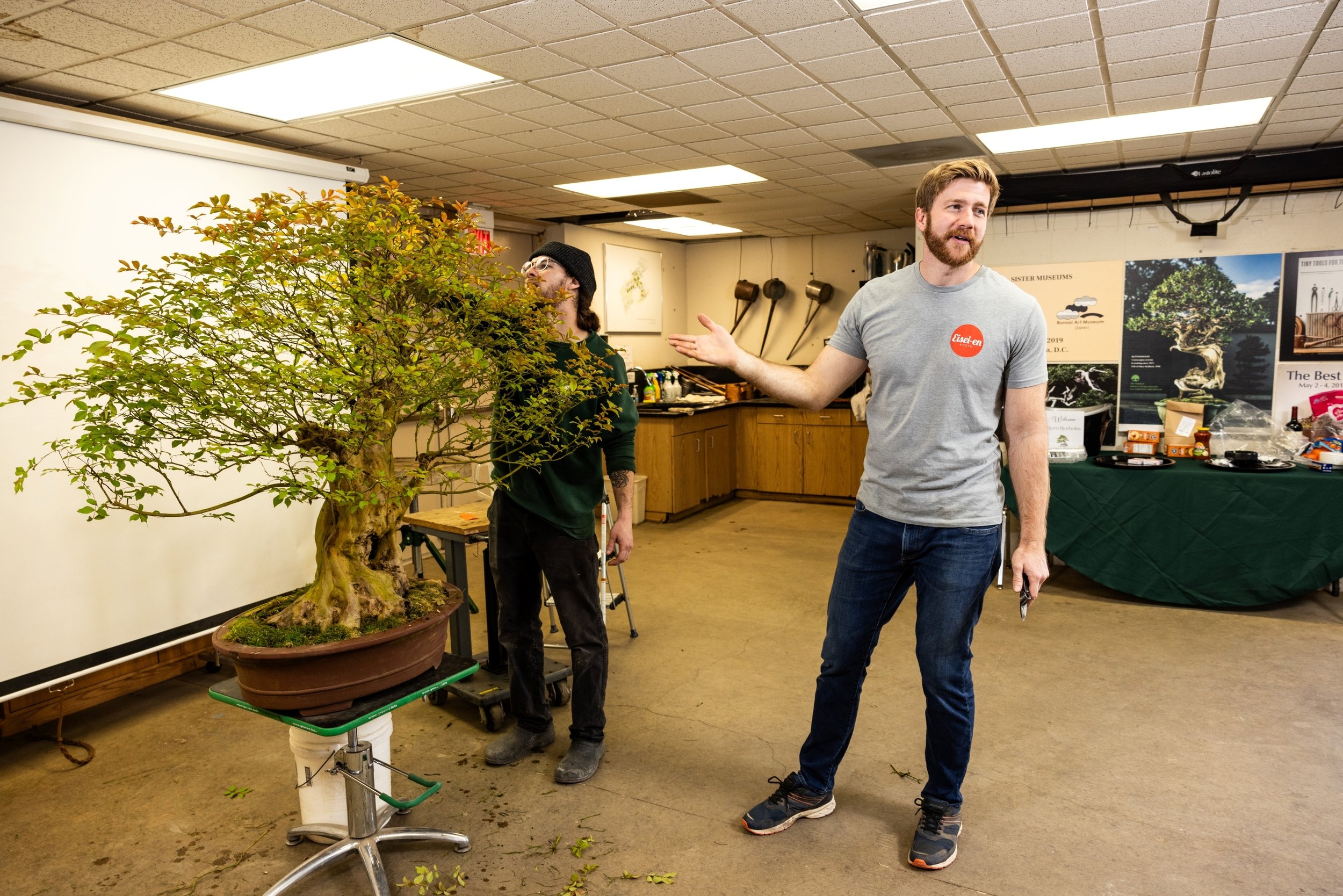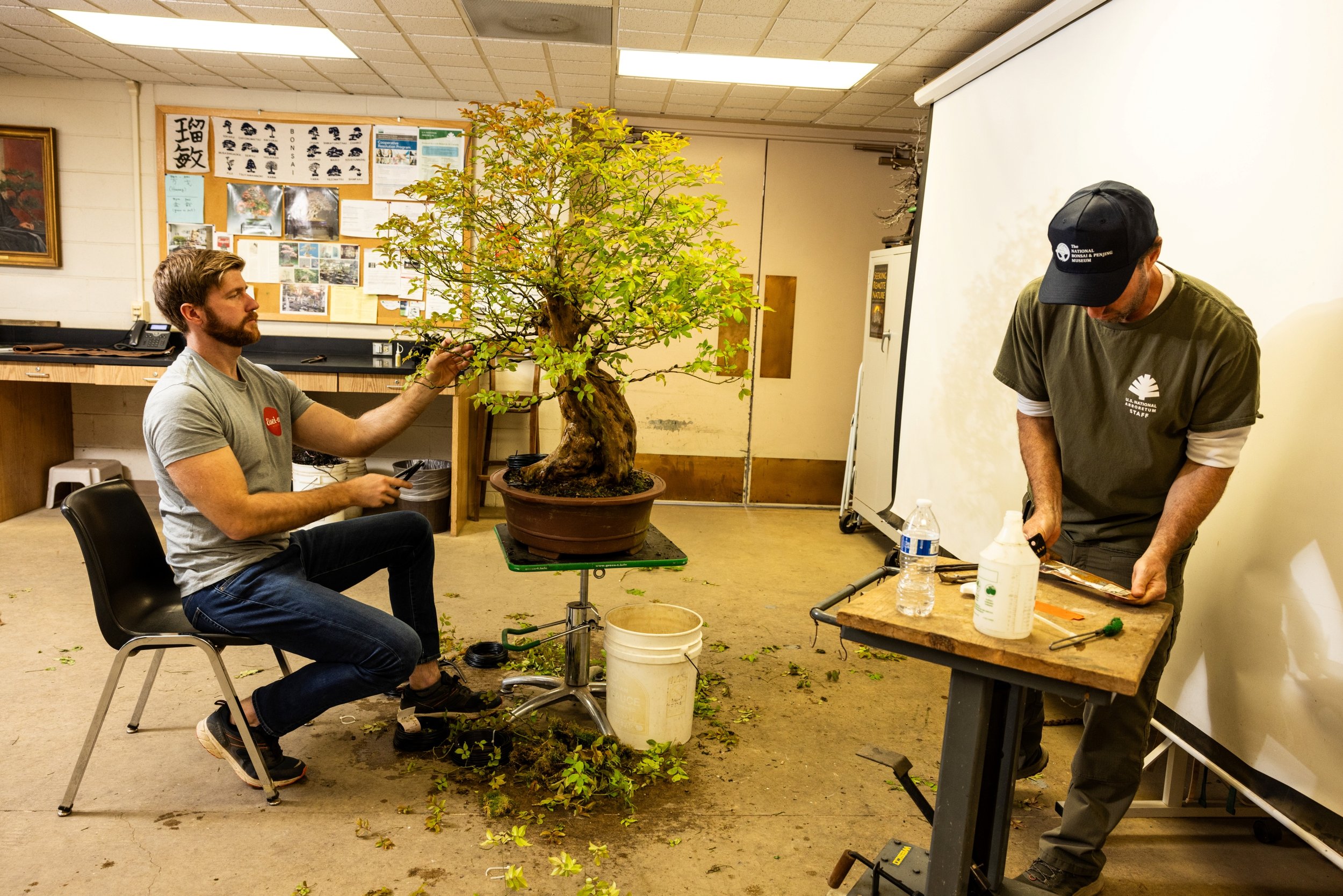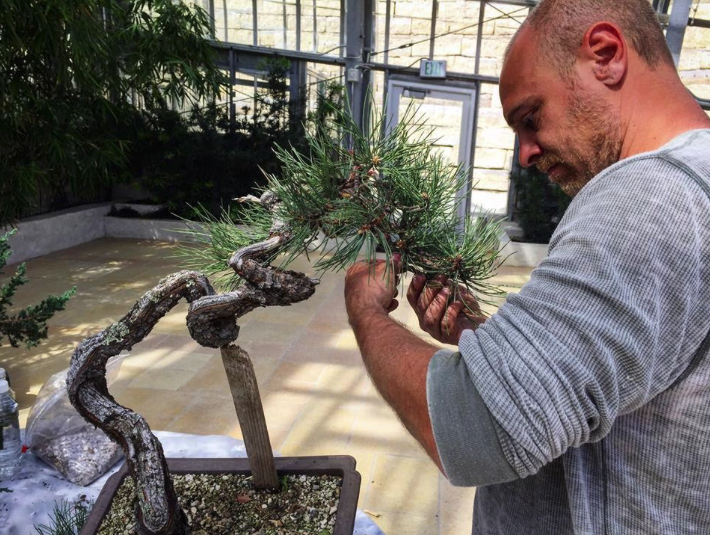RECENT Donations to the National Bonsai & Penjing Museum
Part 4/6
In 2024, the National Bonsai & Penjing Museum welcomed five remarkable new additions—four exquisite bonsai and a striking suiseki. Each piece tells a unique story, reflecting the artistry, history, and evolving traditions of bonsai. Carefully selected for their cultural significance and artistic merit, these new acquisitions highlight the diversity of bonsai and its growing influence in North America. Join us as we explore the fascinating origins, creative vision, and horticultural mastery behind these latest treasures.
The magnificent bonsai displayed at the National Bonsai & Penjing Museum often hail from unassuming locales across the world. This particular crepe myrtle seemed destined to land back at the U.S. National Arboretum.
In May 1978, the U.S. National Arboretum officially released a cultivar of crepe myrtle called Lagerstroemia indica, or Natchez, that had been specifically bred for its resistance to disease. The seeds were a cross between Asian crepe myrtle genes, impervious to powdery mildew, and U.S. genes that produce the iconic crepe myrtle flowers and mottled bark. They were sent to nurseries all over the United States.
Cliff Pottberg, owner of a Florida nursery called Bonsai at Pasiminan, grew this specimen for more than 35 years, alongside a field of 25 other crepe myrtles. Brussel Martin – founder of Brussel’s Bonsai, the largest nursery in the United States – purchased the tree in 2013 and cared for it for 10 years.
Martin’s nursery manager helped transplant the crepe myrtle from Pasiminan and was told that the tree was either of Natchez or Muskogee cultivar, but this mystery remained unsolved. Although its specific origin had been lost to time, the tree stood out as a quintessential example of a flowering bonsai.
Recognizing the uniquely special characteristics of the tree, McNeal McDonnell – previous co-owner and now sole owner of Brussel’s Bonsai – generously donated it to the Museum. McNeal is a business entrepreneur with a deep appreciation for the art and beauty of bonsai.
In early 2024, the crepe myrtle arrived in Washington, DC. Noted bonsai expert Bjorn Bjorholm, with support from Curator Michael James and Assistant Curator Andy Bello, styled the tree in the Museum’s Yuji Yoshimura Lecture and Demonstration Center. Guided by Bjorholm’s artistic insight while honoring the original vision for the tree, they trimmed, wired, and shaped the crepe myrtle to prepare it for its new home on display among the native species in the North American Pavilion.
Assistant Curator Andy Bello, Curator Michael James, and bonsai artist Bjorn Bjorholm after styling the Queen of the Crepe Myrtles, 2024.
Four months later, the tree finally flowered. This allowed a botanist on staff to determine that this species was none other than Natchez, the very same cultivar that the Arboretum had introduced back in the 1970s – bringing the Lagerstroemia indica full circle, back to its roots.
Curator Michael James said this cultivar demonstrates how a plant’s value can increase both through breeding – ensuring a species is disease resistant, tolerates droughts, produces more ornate flowers, etc. – and through artistic training techniques.
U.S. National Arboretum Director Dr. Richard Olsen admires the crepe myrtle.
“People often don’t make the connection between bonsai and scientific institutions,” Michael said. “But if you’re going to care for a plant that will last longer than your lifetime, it’s important to start by choosing a plant with strong attributes.”
With its glossy, dark green leaves and pure white flowers, this elegant deciduous tree became known as the “queen of crepe myrtle,” a perfect example of how the Arboretum’s and Museum’s missions are intertwined. The species’ mottled cinnamon bark and powdery, mildew-resistant foliage flaunts its long-tapered pure white flowers between June and September.
We look forward to seeing you at the Museum this summer, when you will be able to witness the crepe myrtle’s full bloom.


















































































